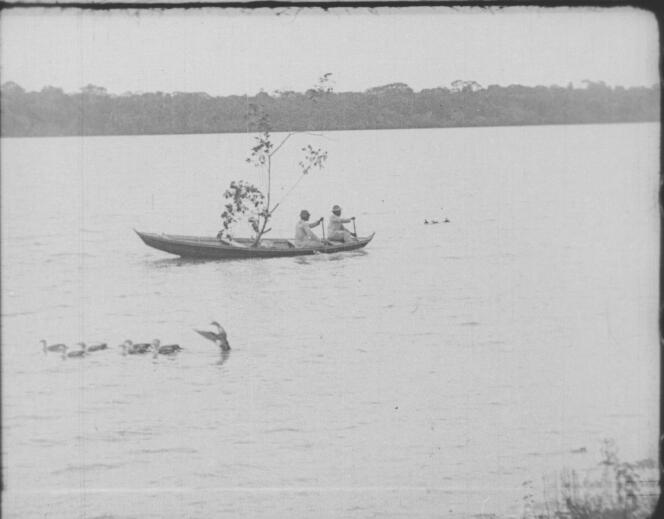


As night fell on November 22, the Brazilian Cinémathèque was packed to the rafters. Dozens of impatient people lined up in the brick aisles of the prestigious Sao Paulo institution, housed in a former 19th-century slaughterhouse. At first glance, however, the film of the day – a black-and-white, silent documentary from 1918 – was not destined to draw crowds.
But on screen, the images, shot in the Amazon, were exceptional. There, in the depths of the forest, we followed the hard labor of nut pickers and rubber tappers. There was a perilous manatee fishing trip conducted with a spear. Further on, there were intriguing faces sculpted in rock by mysterious indigenous people. Jaguars, monkeys and crocodiles were filmed in close-ups or in captivating tracking shots from a canoe.
Considered one of the oldest films shot in the Amazon, the 66-minute feature was long forgotten. Amazonas, o Maior Rio do Mundo ("Amazon, the Greatest River in the World"), directed by Silvino Santos, was regarded for decades as a lost gem, swallowed up in the tumultuous waves of the 7th art... until it resurfaced this year, almost miraculously.
It was all worth a screening, with sound accompaniment by composer Luiz Henrique Xavier. Inspired by indigenous songs, forest sounds and the works of Heitor Villa-Lobos, Xavier completed his task in "a weekend." It had to be done quickly, as "this is an extraordinary discovery," said Eduardo Morettin, a renowned professor of film history at the University of Sao Paulo, in a post-film discussion.
Back in 1918, cinema was still in its infancy when the young Santos undertook a major documentary on the Amazon. At the time, the young Portuguese photographer based in Manaus was 32 years old and had very little experience. To his credit, he shot a propaganda film in Peru on behalf of rubber moguls accused of treating their employees like slaves.
Filming in the Amazon took three long years. The young filmmaker makes a point of filming every nook and cranny of the forest and "uses the most modern narrative techniques, with dynamic editing, zooms, movement... He alternates lyrical, comic and contemplative points of view. It's of immense artistic value," said Savio Luis Stoco, a professor at the Federal University of Para and specialist in Santos' work.
Except shortly after completion, the film was simply stolen. Propercio de Mello Saraiva, Santos' partner, left for Europe with the negatives to negotiate the film's distribution abroad. But on the way, he changed the name of the film and claimed it as his own. The swindler signed a contract with Gaumont and the film was shown for some time throughout Europe – before disappearing completely around 1930.
You have 45% of this article left to read. The rest is for subscribers only.
